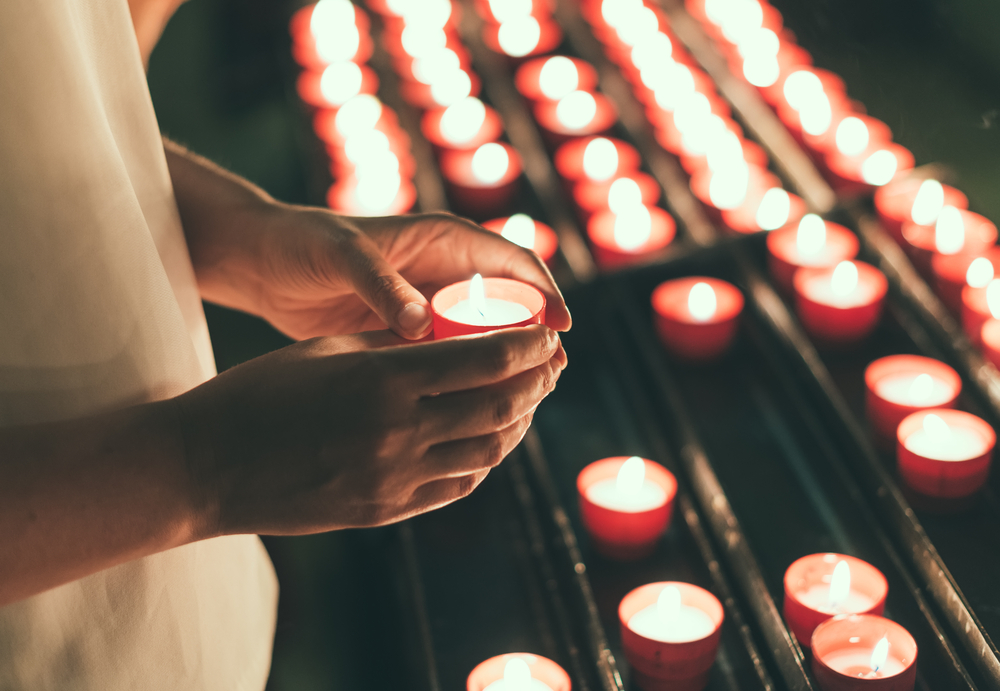Welcome to our special section, Thrive on Campus, devoted to covering student mental health, well-being, and redefining success from all angles. If you are a college student, we invite you to apply to be an Editor-at-Large, or to simply contribute (please tag your pieces ThriveOnCampus). We welcome faculty, clinicians, and graduates to contribute as well. Read more here.
Near-death experiences (NDEs) transform individuals. We must harness their power to transform communities.
Last week, philosophy professor John Fischer penned a New York Times opinion about NDEs and the profound spiritual transformation that many survivors report afterwards. These narratives relate a sensation of floating up outside of the physical body and establishing contact with the spiritual world. Often in times of hardship and tragedy, those who experience NDEs return with less anxiety, enhanced focus, and a refined sense of morality.
NDEs traditionally connotate individual metamorphosis, but they can also strengthen and unite the community psyche.
My school community, for example, united when a cherished member of the lacrosse team passed away in a car accident in 2013. We keep his memory alive with annual lacrosse celebrations and a hashtag of solidarity, #10ve — in commemoration of his jersey number #10.

Another beloved student, recently diagnosed with osteosarcoma, has traded his football season for chemo treatment. The school community is supporting him with messages of #2Strong — a reminder of his jersey number #2 — and rival teams across the state have sent out thoughtful messages.
These moments serve as near death experiences (NDEs) for the entire community. Parents hug their children just a little bit tighter, friends make hospital visits and re-evaluate priorities, considering how they can relish opportunities that others may have lost.
But must it take tragedy to transform us? How can we emerge grateful and humble from everyday challenges without requiring collective loss?
These are not easy questions to answer — questions that have perplexed great thinkers and leaders throughout history. The Ancient Greeks were well aware of the paradox of tragedy, with Aristotle coining the “catharsis” metaphor in the Poetics. He understood that tragedy — amidst its gloom and destruction — kindled spiritual restoration in the audience.
The modern world, however, focuses solely on the future — not tragedies of the past. Young adult literature is often dystopian, and we all eagerly await the release of the newest iPhone. College campuses too are structured this way, with STEM subjects naturally building on proven theories and looking only ahead. I instead suggest that we wear the historical hat, digging deep into the humanities and arts, to view every day with gratitude. The effect of a communal NDE can, unfortunately, be short-lasting. If we want to take away something permanent, we should reckon with the tragic arts and solidify lessons in reflection and action.
For a long time, scientists have questioned the legitimacy of NDEs. Primary literature has attempted to characterize NDEs as neurological responses to oxygen shortage, anesthesia, or other trauma. But what makes NDEs more than a chemical cascade, according to Gideon Lynch in his piece for The Atlantic “The Science of Near-Death Experiences,” is its meaningful progression of ideas. NDEs can often resemble the hero’s journey, a global storytelling phenomenon that Joseph Campbell identified in 1949. In it, the hero — initially reluctant to embark on adventure — crosses a threshold into a series of trials through which he achieves victory and returns home transformed.
The recent and untimely death of Kobe Bryant offers another look into this model. Generation X will always remember where they were when President John F. Kennedy was shot. Millennials know their location when they saw the World Trade Center collapse on 9/11, and my generation will too when Bryant and his daughter Gigi left us decades too soon. Bryant’s death reverberates widely, as the image of the man who combined Philly grit with Hollywood success inspired so many.
With youth stress rates on the rise, and amidst imminent environment, nuclear, and technological threats, it is in our collective interest to recognize the potential of NDEs, the tragic arts, and communal support to permanently imbue our communities with a pronounced sense of humanity and humility.
Subscribe here for all the latest news on how you can keep Thriving.
More Thrive on Campus:
What Campus Mental Health Centers Are Doing to Keep Up With Student Need
If You’re a Student Who’s Struggling With Mental Health, These 7 Tips Will Help
The Hidden Stress of RAs in the Student Mental Health Crisis


